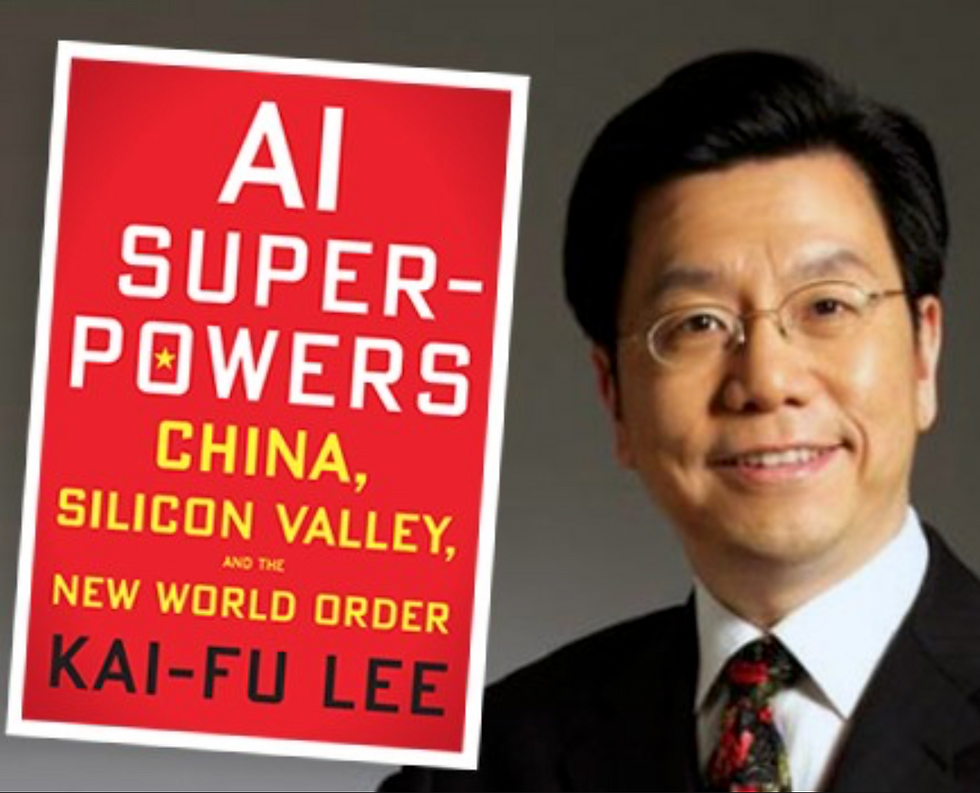AI Superpowers: China, Silicon Valley, and the New World Order
- Joe Lu

- Sep 12, 2020
- 3 min read

AI Superpowers is one of the most informative books we have read on the implications of neural networks. Kai-Fu Lee is the Founder and CEO of Sinovation Ventures. Former employers include Google and Microsoft where is widely recognized as having contributed to cutting edge innovations in AI. Lee appears to have left his position as “President of Google China” after becoming frustrated with Google’s approach to succeeding in China’s marketplace. Lee spends no time hyping about robot take-overs and cuts right to the practical implications of the technology for business and the “World Order”.
Here are our takeaways:
Deep Learning (DL*) was first developed in 2006 and has since surpassed all other machine learning (ML) applications when given enough data. Much of what we see as rapid progress in ML is really incremental improvements in DL. This gives the false impression that the rapid pace of improvement will spontaneously result in a singularity in which robots learn to generalize what they have learned and reprogram into superhuman intelligence. This may happen at some point, but it will require multiple major breakthroughs; which tend to happen infrequently (multiple decades).
China has significant advantages over the USA now that DL has gone from the “age of discovery,” which depended upon inventors and elite thinkers, to the “age of implementation,” which depends on data, computing power, and speed of execution. These advantages include hyper competitive business landscape, support from the government including a willingness to take bigger risks, and a greater willingness to copy what works (some call it stealing) from others and improve upon it.
Lee predicts that within 15 years, AI will have the technical ability to eliminate 40% to 50% of jobs in the U.S. While this prediction is alarming, he caveats that it may take an additional 10 years for all of these jobs to actually get replaced.
AI Applications will come in four waves:
Internet A.I. - Powered by the huge amount of data flowing through the web, Internet A.I. leverages the fact that users automatically label data as we browse: buying vs. not buying, clicking vs. not clicking. These cascades of labeled data build a detailed profile of our personalities, habits, demands, and desires: the perfect recipe for more tailored content to keep us on a given platform, or to maximize revenue or profit.
Business A.I. – DL applied to proprietary data sets from all industries. Applications would include categorization, decision making, maintaining and digitizing records, forecasting, and simplifying business processes with the ultimate goal of improved business decision-making.
Perception A.I. – Adding eyes, ears, and other senses to mounted sensors in cities, homes, cars, and robots will create entirely new data streams, and with them, new applications. For example, cameras could scan work sites to ensure adherence to applicable safety codes.
Autonomous A.I. – Integration of better hardware into the previous three waves of AI. This will give machines the ability to sense and respond to the world around them in order to achieve some objective. For example, autonomous vehicles use pattern recognition to achieve the objective of avoiding a collision and reaching some destination. Industrial applications will come first because of the larger economies of scale.
* Deep Learning is a method of prediction that uses a neural network inspired by the brain, specifically the interconnection of neurons. Each layer of “neurons” is a function that relates a raw input feature (independent variable) to the output and other neurons in the network. Multiple layers of neurons form a Deep Neural Network (DNNs). In practice, DNNs may contain thousands of layers and billions of “parameters” formed from many combinations of features. Unlike brains, DNNs are “trained” on labeled data; that is, data which has been identified such as pictures of cats labeled “cat”. DNNs us DL to turn this data into a prediction, such as the probability that a picture contains a cat.
All DNNs today fall into the category of Artificial Narrow Intelligence (ANI). This means that a DNN trained to identify pictures of cats cannot generalize this knowledge in any way. The same DNN does not understand the qualities of a cat. The underlying code is still, at its core, simply finding correlations between image pixels and whether a picture is labeled “cat”. For DNNs to become superhuman, we would need to discover a means of generalizing the machine learning process, a technology that is categorically different from what is available today called Artificial General Intelligence (AGI).
“AGI requires advanced capabilities like reasoning, conceptual learning, common sense, planning, cross-domain thinking, creativity, and even self-awareness and emotions, which remain beyond our reach. There are no known engineering paths to evolve toward the general capabilities above.” – Kai-Fu Lee




Comments